
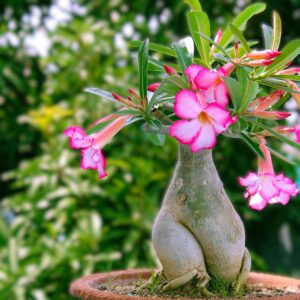
Giant Taro (Alocasia macrorrhiza) live plant 2′-3′ feet tall
$39.99
Giant Taro or Alocasia macrorrhiza, commonly known as, Giant Elephant Ear, or simply Giant Alocasia, is a spectacular tropical plant that is valued for its enormous, lush leaves and striking appearance. This plant originates from tropical Asia and Australia, where it naturally grows in warm, humid environments. Known for its impressive size, Alocasia macrorrhiza can transform gardens, patios, and indoor spaces with its bold, exotic look, bringing a touch of the rainforest to any setting.
Giant Taro
Growth and Appearance:
Alocasia macrorrhiza is one of the largest members of the Alocasia family, with leaves that can reach up to 3 to 6 feet long and 2 to 4 feet wide under optimal conditions. The leaves are arrow-shaped and deeply veined, with a glossy, vibrant green color that gives the plant a rich, tropical look. The leaves grow from thick, upright stems that can make the plant reach heights of 10 to 15 feet outdoors, though it may grow smaller when kept indoors or in containers.
Due to its size and dramatic foliage, this plant is often used as a focal point in landscaping and is ideal for creating a lush, tropical atmosphere. In regions with mild winters, it can be grown year-round outdoors; otherwise, it can be grown as an indoor plant or as a seasonal outdoor plant that’s brought indoors for winter.
Growing Conditions:
Alocasia macrorrhiza thrives in warm, humid climates and grows best in USDA hardiness zones 9 to 11. It prefers partial shade to filtered sunlight, although it can tolerate full sun if given sufficient water and humidity. In areas with intense sunlight, some afternoon shade is beneficial to prevent leaf scorch.
This plant loves well-draining, fertile soil rich in organic matter. A slightly acidic to neutral pH (5.5 to 7.0) is ideal for promoting healthy growth. For outdoor planting, adding compost or other organic matter to the soil will help retain moisture and provide nutrients.
Watering and Humidity:
Alocasia macrorrhiza requires consistent moisture, especially during the growing season in spring and summer. The soil should be kept evenly moist, but not waterlogged, as excessive water can lead to root rot. In cooler months, when the plant’s growth slows down, reduce watering slightly. Alocasia macrorrhiza also loves high humidity, so it’s important to mist the leaves regularly or place the plant in a humid environment to replicate its native tropical conditions. For indoor growing, a humidifier can help keep the air moist, especially in dry or air-conditioned environments.
Fertilizing:
This giant Alocasia is a heavy feeder and benefits from regular fertilization during the growing season. A balanced, slow-release fertilizer applied every 4 to 6 weeks in spring and summer will support the plant’s rapid growth. Alternatively, you can use a liquid fertilizer every 2 to 4 weeks during the growing season. Avoid over-fertilizing, as this can lead to nutrient burn on the leaves. In winter, reduce feeding, as the plant’s nutrient needs decrease.
Care and Maintenance:
Alocasia macrorrhiza requires minimal pruning, but it’s helpful to remove any yellowing or damaged leaves to keep the plant looking tidy and to encourage new growth. Due to its large size, it’s essential to ensure that the plant has enough space to spread out, whether it’s grown outdoors in the garden or indoors in a large container. Staking may be necessary if the plant becomes top-heavy, especially in windy areas or if grown in a container.
If you live in a colder climate and are growing Alocasia macrorrhiza outdoors, you may need to dig up and store the tubers before the first frost. Store them in a cool, dry place and replant them in the spring when temperatures warm up. Alternatively, the plant can be brought indoors and kept as a houseplant during the colder months.
Pests and Diseases:
Alocasia macrorrhiza can be susceptible to common pests like spider mites, aphids, and mealybugs. Regular inspection of the leaves and treating infestations promptly with insecticidal soap or neem oil can help keep pests under control. Fungal diseases, such as root rot or leaf spot, can also occur if the plant is overwatered or if there is poor air circulation. Ensuring the soil has good drainage and avoiding water on the leaves can help prevent these issues.
Growing in Containers:
Alocasia macrorrhiza can be grown in large containers, making it an excellent choice for patios, balconies, or indoor spaces with enough light. Choose a container with good drainage holes and fill it with a rich, well-draining potting mix. Container-grown plants may require more frequent watering and feeding than those grown in the ground, as they are more limited in their soil and nutrient access. Keep in mind that this plant can grow quite large, so be prepared to repot it as it outgrows its container.
Conclusion:
Alocasia macrorrhiza is a stunning and dramatic addition to any tropical-themed garden or indoor space. Its giant, lush leaves bring an exotic touch and create a striking focal point, making it a favorite among gardeners and plant enthusiasts. With the right care, including ample moisture, high humidity, and adequate space, this giant Elephant Ear plant will thrive and add a lush, tropical feel to any environment. Whether used outdoors in warm climates or as a statement plant indoors, Alocasia macrorrhiza is sure to impress with its majestic size and beauty.
| Weight | 10 oz |
|---|---|
| Dimensions | 22 × 4 × 4 in |

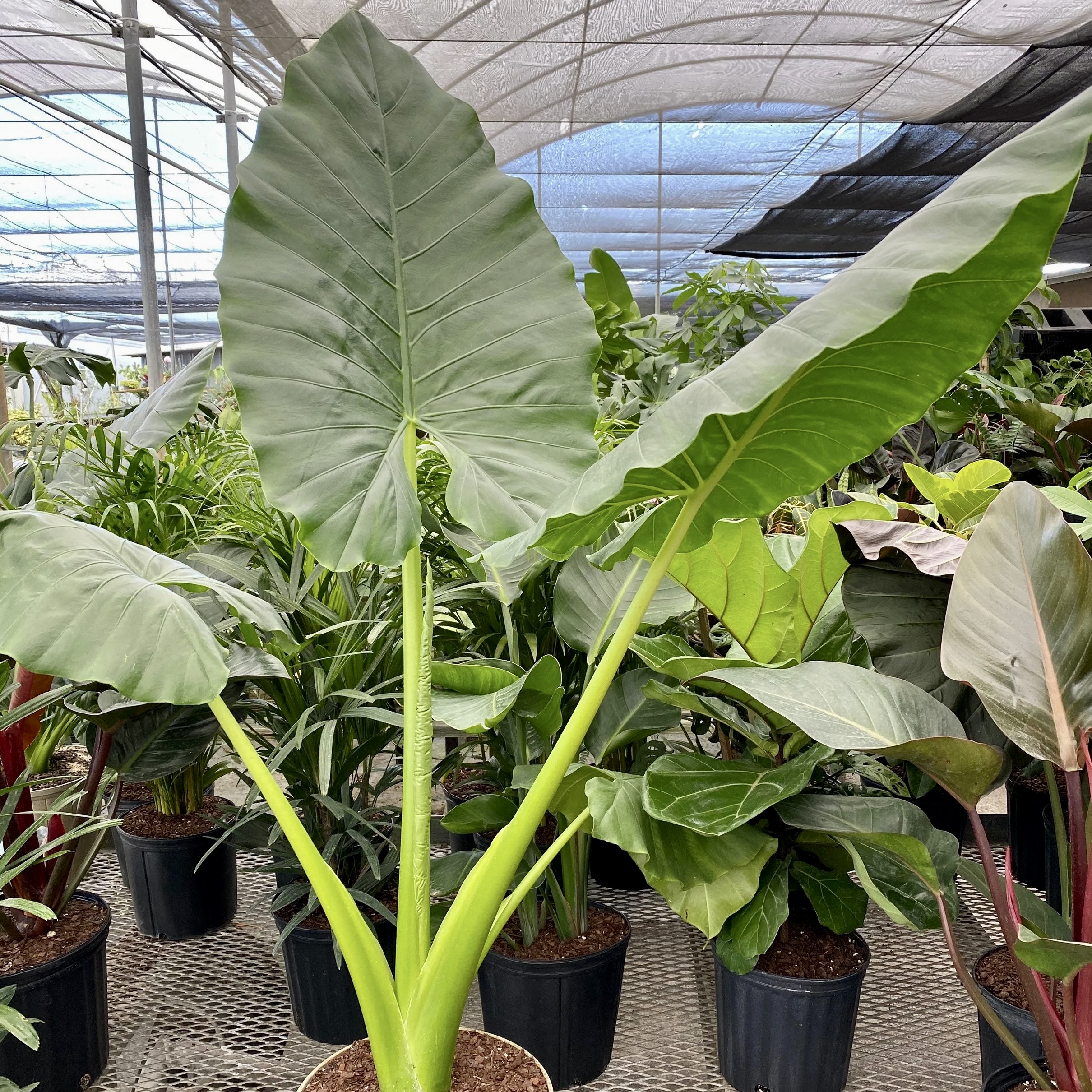

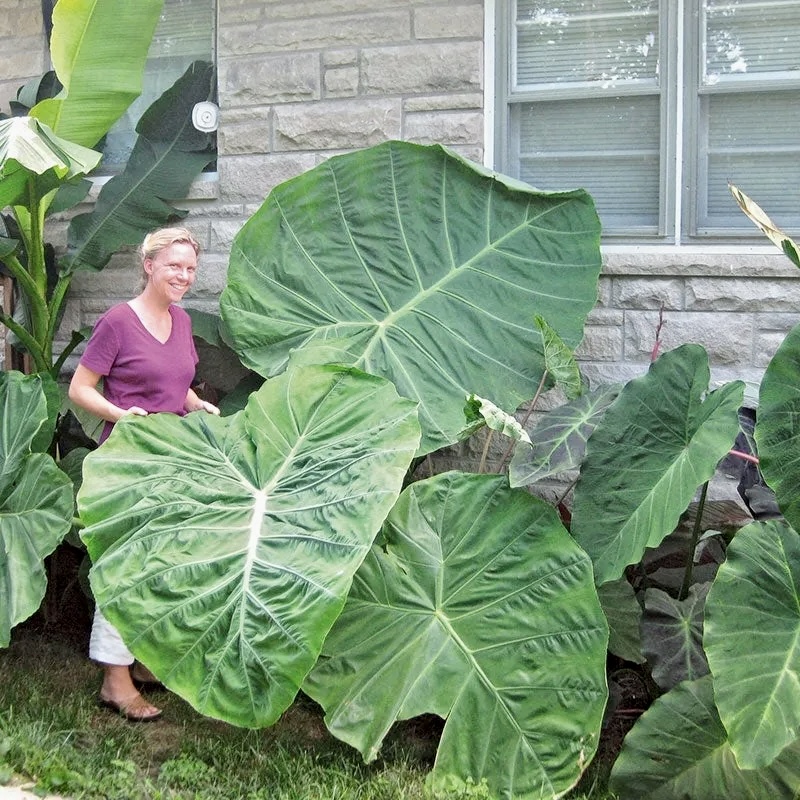



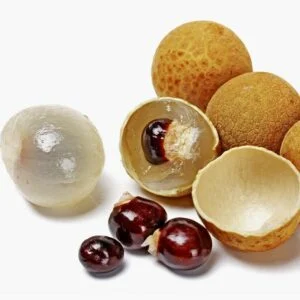
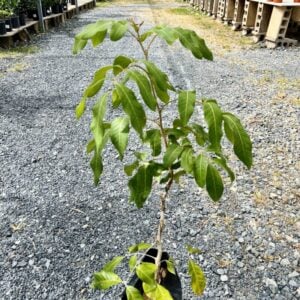
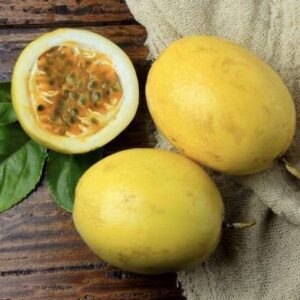
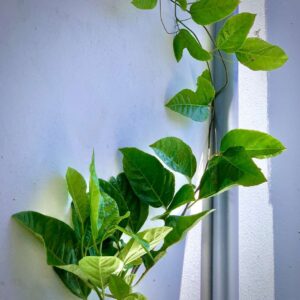


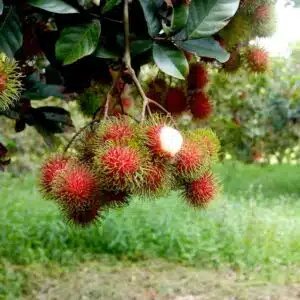
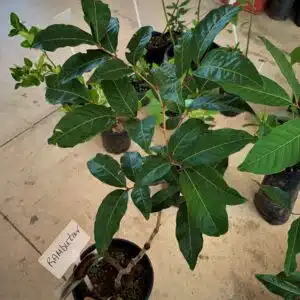
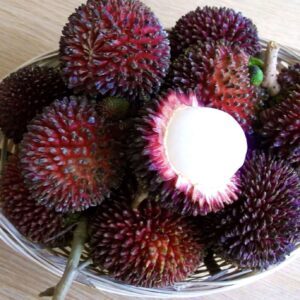
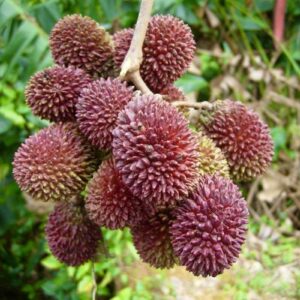


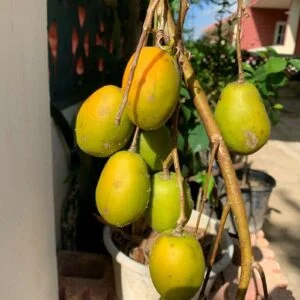



Reviews
There are no reviews yet.